HTC One max Review - It's Huge
by Brian Klug on October 28, 2013 10:00 AM EST- Posted in
- Smartphones
- HTC
- Mobile
- One
- Snapdragon 600
- Android 4.3
- One max
Obviously the highlight of the One max is its huge 5.9-inch 1080p display. After all, the huge display is literally the reason for the max moniker and its gargantuan size. It’s still an IPS LCD, and like the One, resolution is 1920x1080. Using the same resolution at larger size means lower PPI, but the One max is still high enough (373.4 PPI) that individual pixels shouldn’t be visible at all.

One interesting thing to note about the One max however is that the android display density is still set to 480 PPI, putting it in the same DENSITY_XXHIGH category as the One. This means that applications will look like scaled copies of what you’d expect them to look like on the One. There’s an interesting ongoing debate about what users really expect from these larger-sized smartphones and the demographic that’s buying them. Do users want scaled, larger applications which are easier to read, or the ability to display more content. HTC oddly enough seems to have scaled parts of their own UI, for example the widget panels are five row instead of four on the One max, and the launcher defaults to the 4x5 size instead of 3x4 which would look downright silly, further the status bar is also smaller.

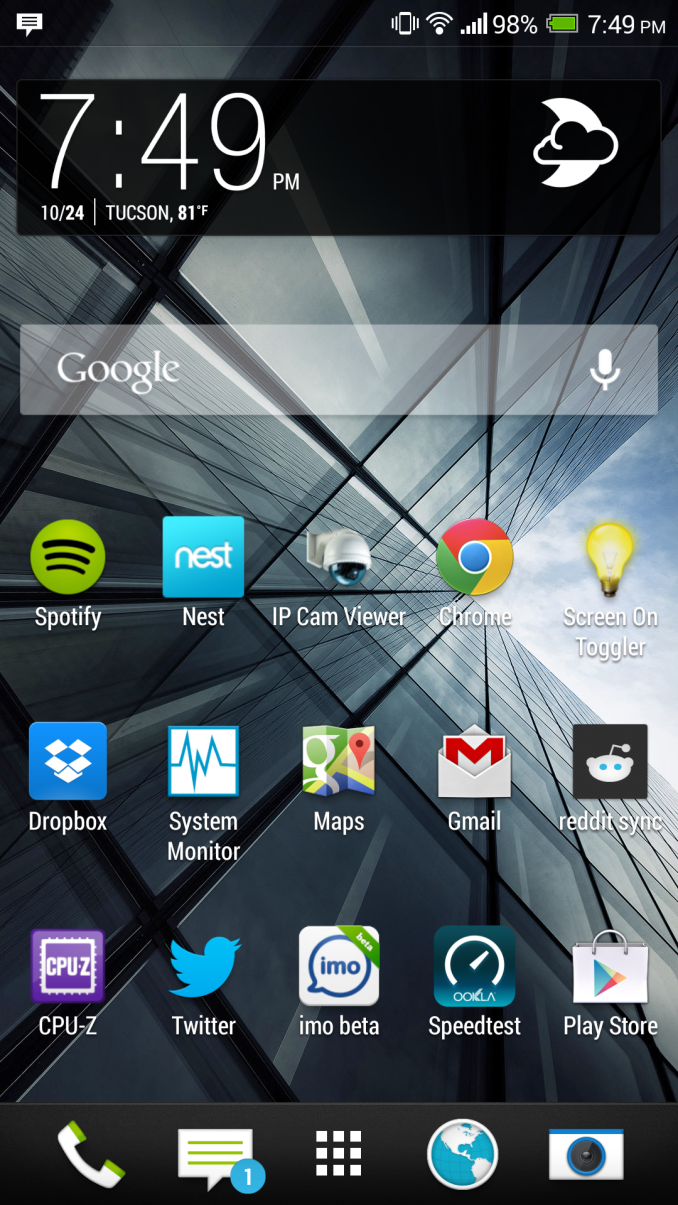
HTC One (Left), HTC One max (Right) – Note the grid and icon size changes
I’m not complaining, it’s just interesting to see 480 in Android but the HTC apps scaled down to give more real-estate, which is what I’d prefer since I have good vision.
One improvement I’m really happy about in Sense 5.5 is a change to the auto brightness function. Rather than just have a checkbox, the One max will allow you to set an upper bound for the auto brightness algorithm. Ideally I would like a higher or upper bound, or a bias function (+/- some delta), but this is a step in the right direction.
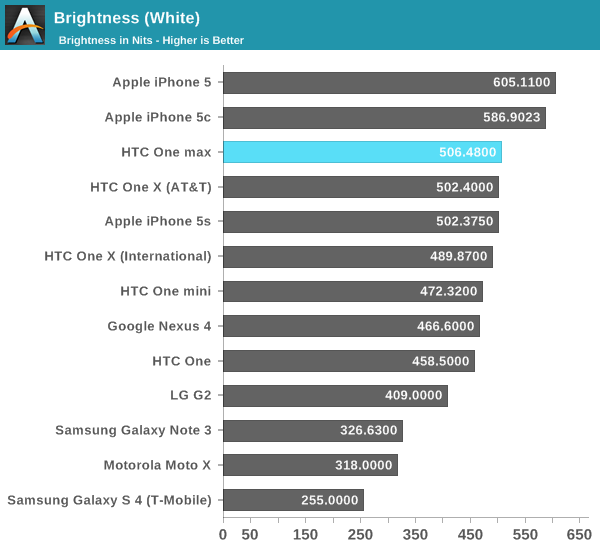
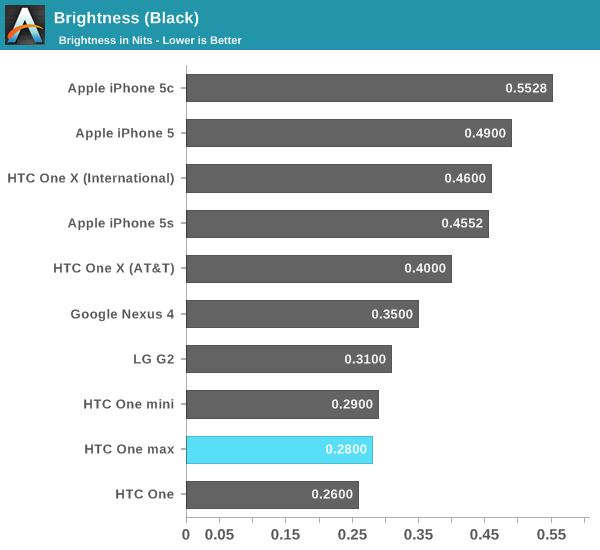
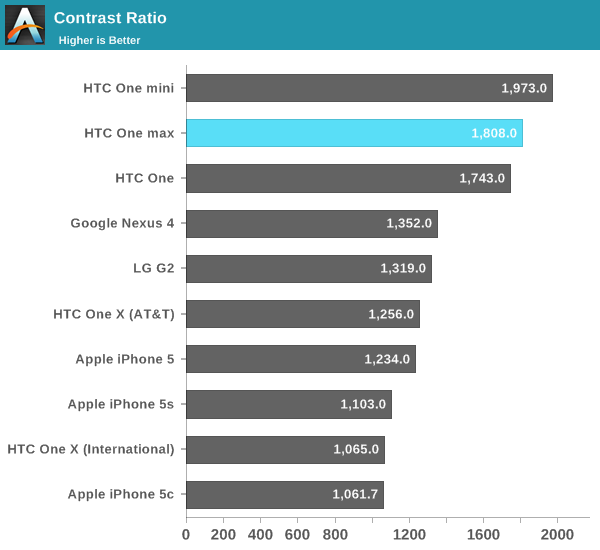
The One max display goes very bright, up to 506 nits, higher than the One or One mini. White point is also a bit more controlled than the One, at 7301 K average. My biggest complaint about the One max is that like the One it has a dynamic brightness/contrast function that adjusts screen brightness as a function of the content being displayed. That alone isn’t a huge problem, it’s just that there’s no way to disable it in the UI, which would be great, since it’s distracting watching screen brightness change as you move around the UI. I would love to see HTC go the Google approach and restrict these functions to full screen video playback, and give the option to turn it off entirely.

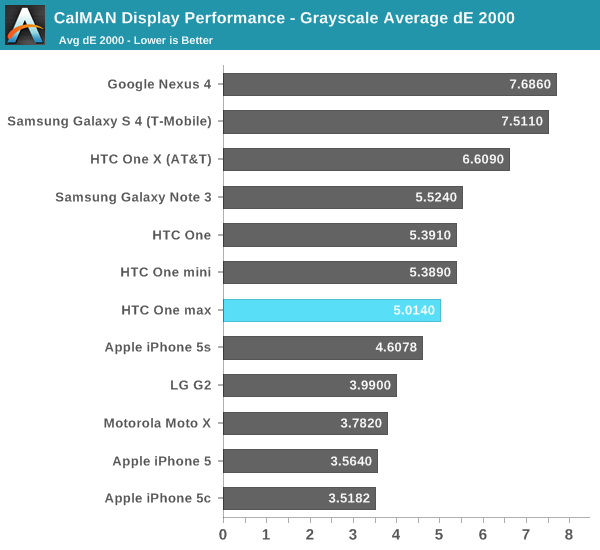
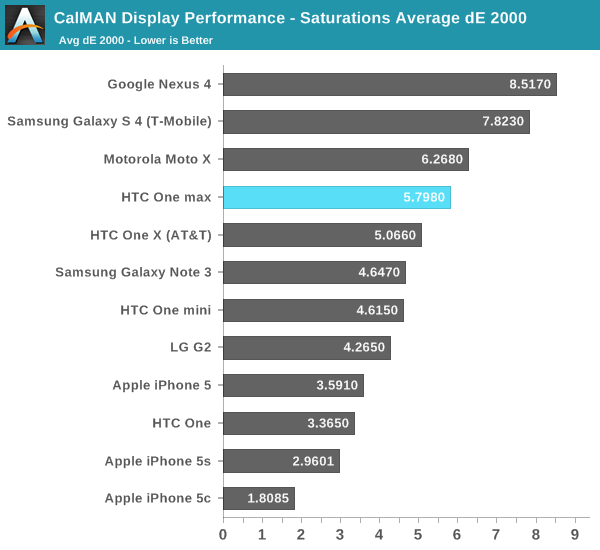


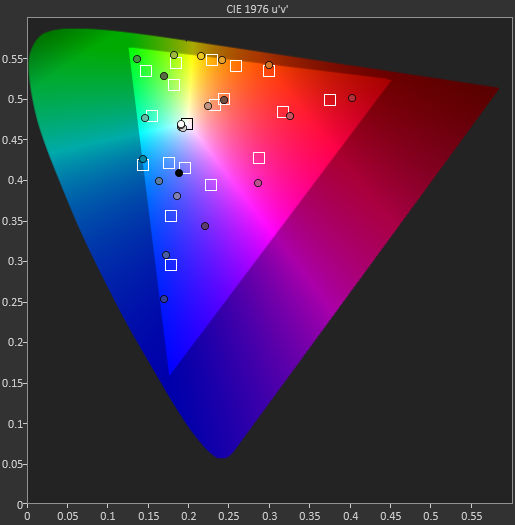
Running it through our display tests, it’s clear that the One max also has a bit of the saturation boost we’ve seen popping up on other phones as well. The saturation curves are great until the second to last point, which is almost set to maximum saturation. I’d love to see even more emphasis on color accuracy for the next generation of phones, the One max seems to be in the general ballpark of the One, but slightly worse.


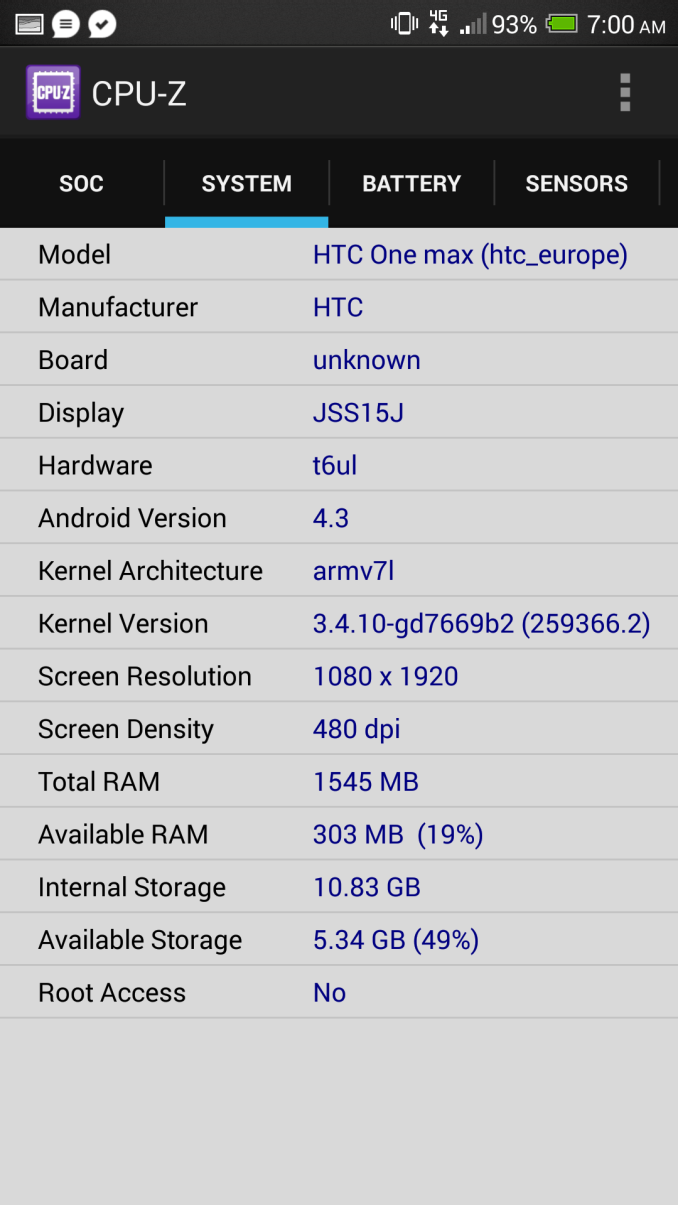
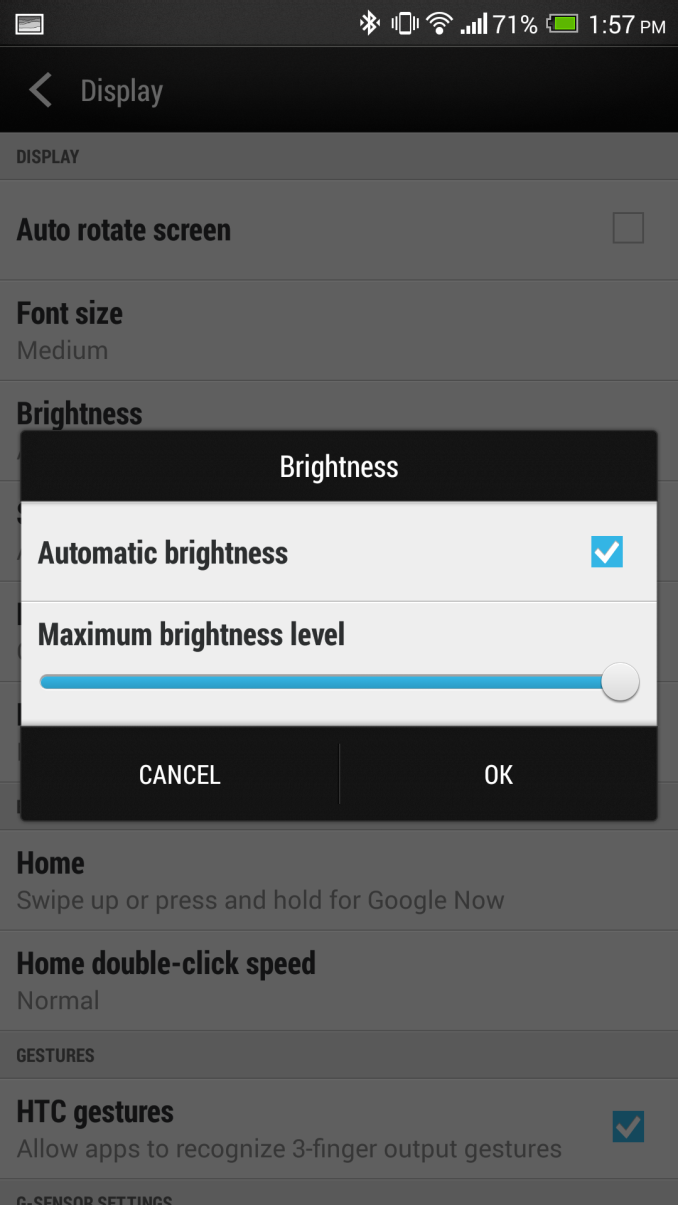









197 Comments
View All Comments
ddriver - Monday, October 28, 2013 - link
The note 3 is not really flat, the camera bulges a little bit, but yes, the overall shape of the back cover is flat. It is modular and replaceable though which does open a bit of customization option.kertisoka - Monday, October 28, 2013 - link
I don't think that the camera bulge is a plus though..ddriver - Monday, October 28, 2013 - link
A shame really, they could have put a much better sensor and optics in such a thick body...beginner99 - Monday, October 28, 2013 - link
Well the One and One Mini were already pretty oversized too in comparison to other models with the same screen size so nothing new (and IMHO bad). I like the design but the screen is too small or the chassis too big.FunBunny2 - Monday, October 28, 2013 - link
Ya want stereo speakers on the front? well, until they make speakers that play through the screen, physics will be physics.Omega215D - Tuesday, October 29, 2013 - link
The BoomSound speakers and the different shell thickness/ weight compared to the Samsung. Samsung uses thinner shells in order to achieve their svelt bodies and lighter weight. Also depends on the display technology used. LCDs are heavier than OLEDs.heron_kusanagi - Monday, October 28, 2013 - link
Hi Brian,Could you please do a Nokia Lumia 1020 review?
Drumsticks - Monday, October 28, 2013 - link
I'd also love to see a modern windows phone review. The 1520, personally. I mean, we got a Z10 review didn't we?If nothing else, id love to see a dive into Nokia's imaging on the 1020 and 1520, which is some engineering that I think everyone should be capable of appreciating, no matter how much you dislike the OS.
Alexvrb - Monday, October 28, 2013 - link
Yeah, I'd also like to see a proper 1520 review. I'm not surprised nobody at Anandtech got an invite to Nokia's event. Keep tossing their review phones in a closet (trash can?)... I'd quit sending you anything, if it was up to me. Waste of time and money.On the other hand, since he hates WP, it might just end up being a big ol' take a dump on the WP device article.
kyuu - Monday, October 28, 2013 - link
+1